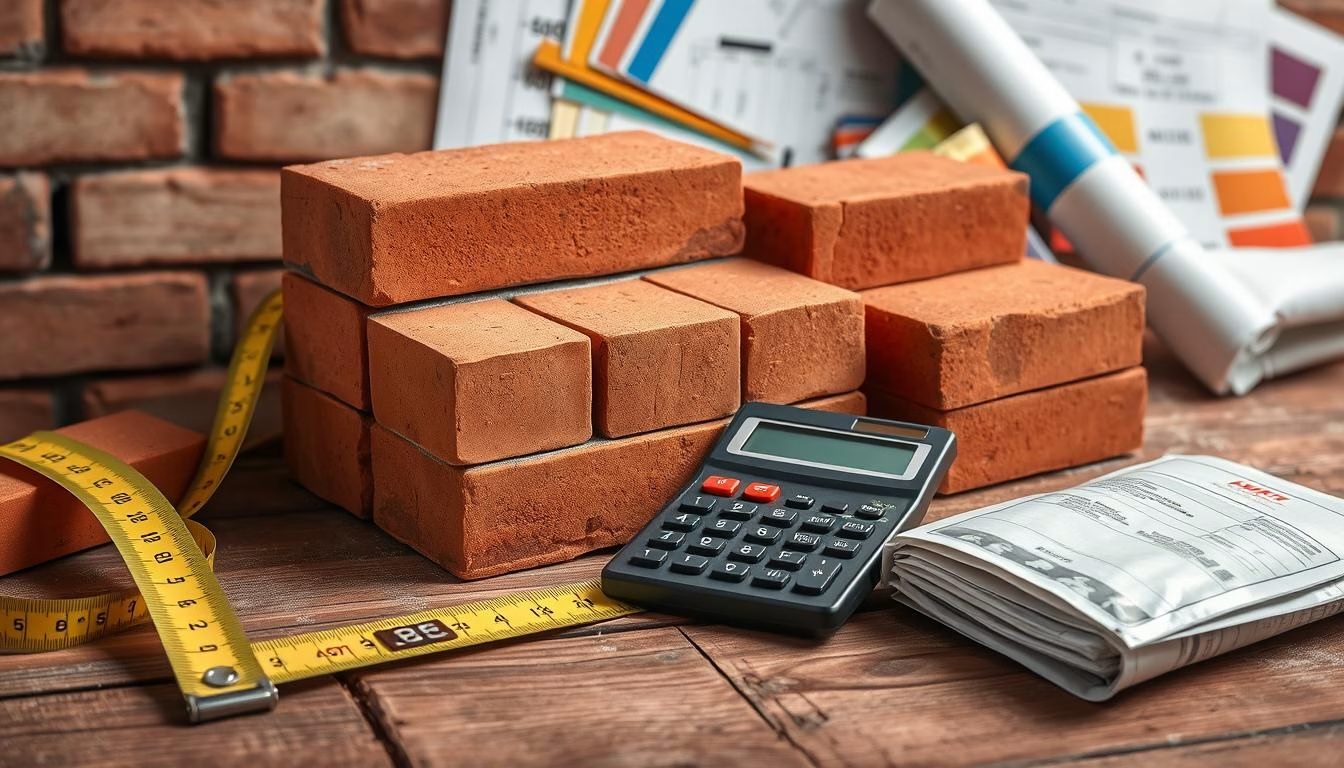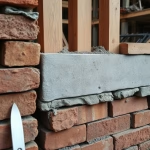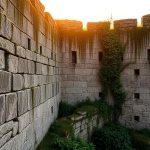Did you know building a wall in the United States can cost between $15 to $60 per square foot? This shows how much money you might need for a wall project. It could be for a fence, privacy wall, or a retaining wall. In this article, we’ll look at what makes wall construction costs vary.
Key Takeaways
- The average cost of building a wall can range from $15 to $60 per square foot, depending on various factors.
- Understanding the different types of walls, materials, and labor costs is crucial for budgeting and planning a wall construction project.
- Factors like location, permits, and design considerations can significantly impact the overall expenses.
- Proper planning, budgeting, and comparing contractor quotes can help homeowners manage their wall construction costs effectively.
- Long-term financial implications, such as property value and energy efficiency, should be considered when investing in a wall.
Understanding Wall Construction Costs
Building a border wall is a complex and costly endeavor. Many factors influence the overall expenses. It’s crucial to understand these elements to grasp the final price tag.
Factors Impacting Overall Costs
The cost of a border wall depends on several factors. These include the choice of materials, labor needs, regional variations, and the project’s scope. The wall’s type, height, length, and terrain also affect the final expenses.
Typical Price Ranges by Material
The material chosen greatly impacts wall construction costs. Prices vary based on the material. Wooden fences are generally cheaper than brick walls, and concrete walls fall in the middle.
Other factors like durability, maintenance, and aesthetics also play a role in the cost.
Regional Cost Variations
Geographical location is a key factor in border wall expenses. Costs can differ greatly across regions. This is due to labor availability, transportation costs, and local regulations.
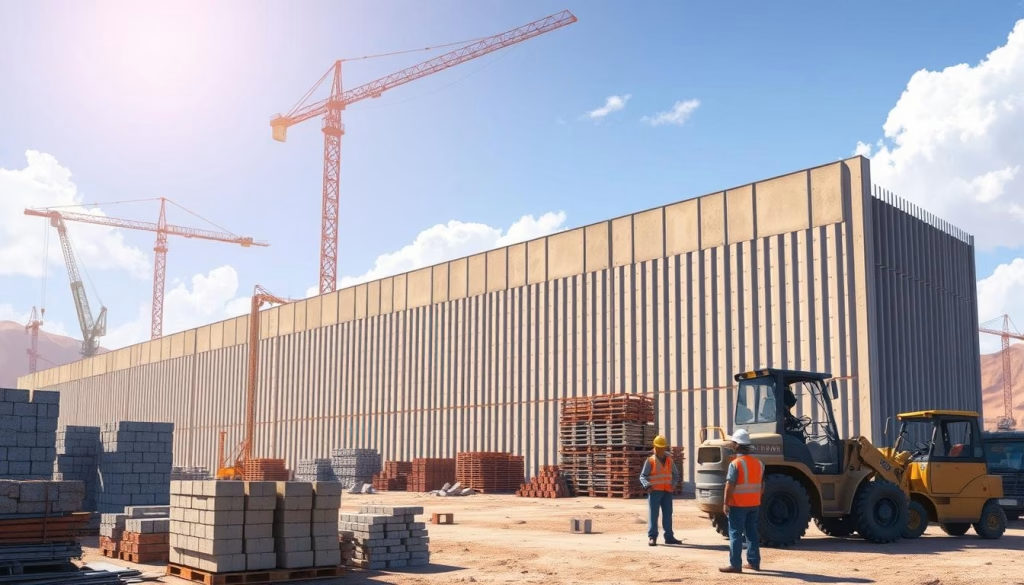
By considering these factors, stakeholders can better understand border wall costs. This leads to more informed decisions and effective financial planning for securing borders.
Different Types of Walls and Their Costs
When building a barrier, taxpayers and government agencies have many choices. Options range from wooden fences to brick walls and vinyl fencing. Each has its own benefits and costs. Let’s look at these options and their prices.
Wooden Fences vs. Brick Walls
Wooden fences are simple and affordable at first. But, they need more upkeep and don’t last as long as brick walls. Brick walls are durable and look great, but they cost more to build and maintain.
Concrete Walls: Budget Breakdown
Concrete walls are strong and flexible for government projects. They cost between $15 and $30 per square foot. This price depends on the wall’s size, thickness, and design. Even though they’re pricey upfront, they need little upkeep later on.
Vinyl Fencing: Pros and Cons
- Vinyl fencing is affordable, costing $10 to $25 per linear foot.
- It’s easy to care for and stands up to weather, making it a good choice for taxpayers.
- But, vinyl fencing may not last as long or offer the same security as other options. Its look might not appeal to everyone.
When choosing walls, government agencies and taxpayers must think about their needs and budget. They should also consider long-term upkeep. This helps make a choice that benefits their community.
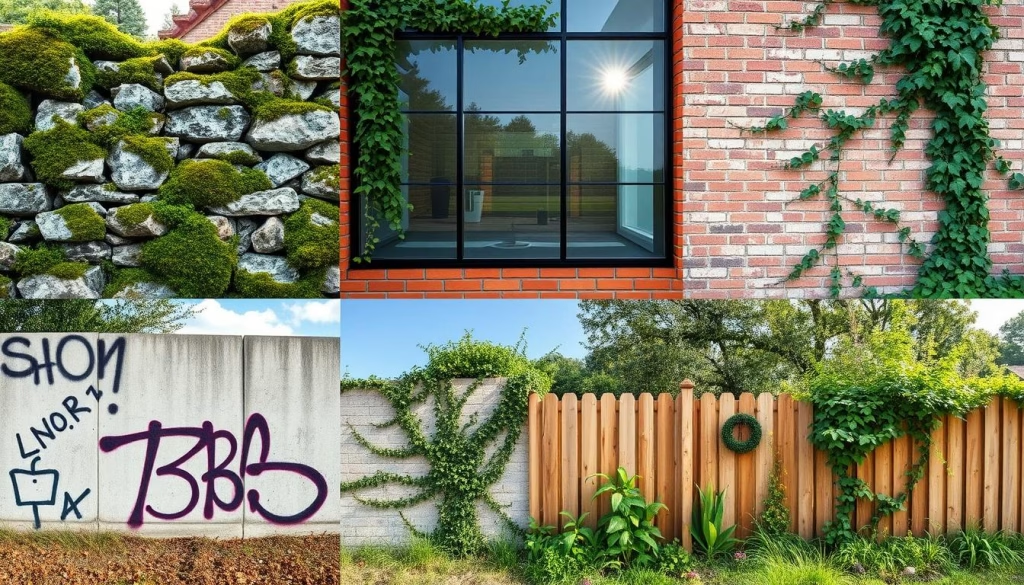
Materials Used in Wall Construction
Choosing the right materials for walls is key. It affects cost, durability, and looks. Knowing the options helps with budgeting and planning.
Exploring Sustainable Options
More people want eco-friendly walls. Bamboo is a fast-growing, attractive choice. Rammed earth uses soil to make strong walls, cutting down on man-made materials.
Cost Comparison: Natural vs. Manufactured Materials
Costs vary between natural and made materials. Natural stone like granite is pricey but lasts long. Concrete and brick are cheaper, making them good for saving money.
Choosing the Right Material for Your Project
- Think about the weather and local rules when picking materials.
- Look at upkeep needs and energy use of each option.
- Focus on what matters most to you, like looks, cost, or green impact.
Knowing about wall materials and their prices helps make smart choices. This aligns with your budget and project goals.
Permits and Regulations
Building a wall for privacy, security, or looks needs careful planning. You must get the right permits. This is a legal must and ensures your wall meets local rules.
Importance of Building Permits
Building permits keep your project safe. They check if your wall follows local codes and safety rules. This protects you and your community.
Costs Associated with Permitting
Permit costs for your wall construction costs change based on where you are. The wall’s size, materials, and project complexity affect fees. Expect to pay from a few hundred to several thousand dollars. Remember to include these costs in your cost of building a wall plan.
Local Regulations to Consider
- Zoning laws: Know your area’s zoning rules. They might limit your wall’s height, placement, and materials.
- Homeowners’ association (HOA) guidelines: If you live in an HOA, check their wall construction rules.
- Environmental impact: Some places have extra rules for your wall’s environmental effect. This includes drainage and sustainable materials.
By tackling permits and rules early, you’ll have a smooth wall construction costs journey. This avoids delays, fines, or project changes later.
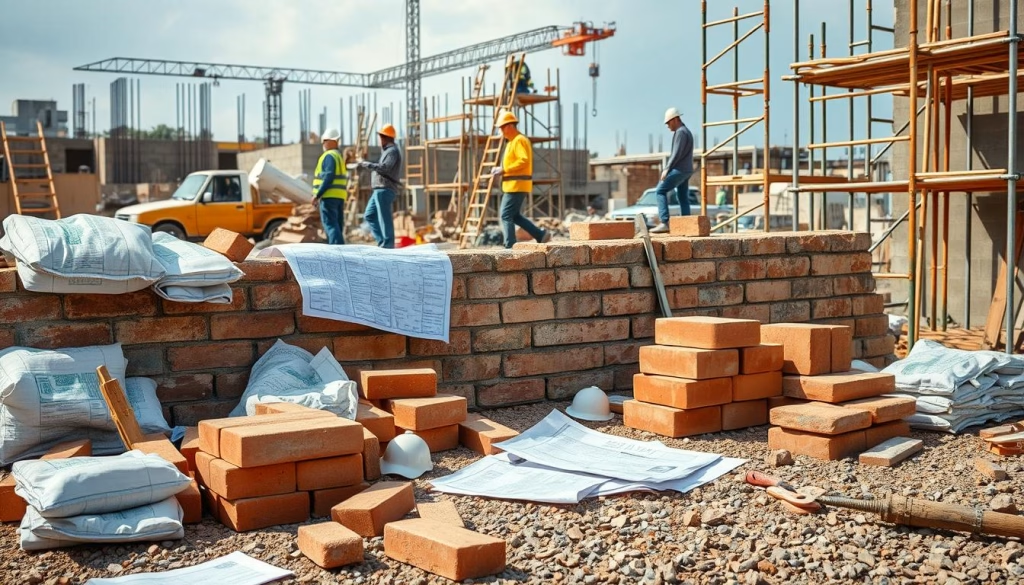
Labor Costs in Wall Construction
Building a border wall involves significant labor costs. It’s important to know the average rates for professional installers. Also, understanding DIY wall construction can help in managing expenses.
Average Rates for Professional Installers
The cost of hiring professional wall installers varies. It depends on the location, project complexity, and installer experience. On average, skilled labor costs between $25 to $50 per hour. This can quickly add up for large projects.
DIY: Cost Savings and Challenges
- DIY wall construction can save money by avoiding professional labor costs.
- But, DIY projects require specialized tools, expertise, and a lot of time.
- Without the right skills and tools, DIY projects may not meet quality and durability standards.
Importance of Skilled Labor
While DIY might seem cheaper, skilled labor is crucial. Experienced installers ensure the wall meets safety and structural standards. Although it costs more upfront, it saves money in the long run by avoiding repairs or replacements.
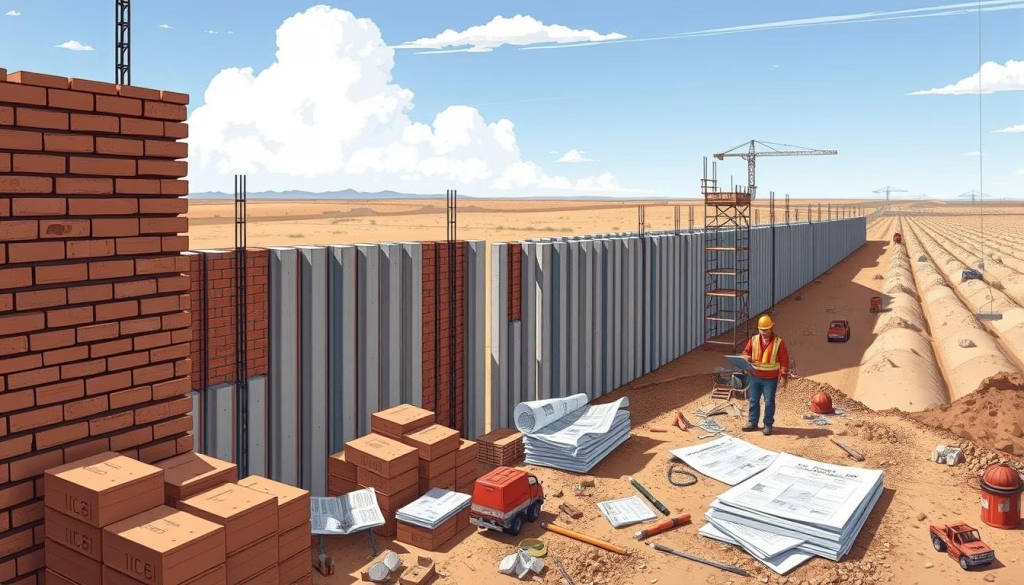
| Labor Cost Factor | Average Range |
|---|---|
| Hourly Rate for Skilled Installers | $25 – $50 per hour |
| Potential DIY Cost Savings | Up to 50% of total labor costs |
| Importance of Skilled Labor | Ensures quality, safety, and long-term durability |
Additional Expenses to Consider
Building a wall is more than just the initial cost. Taxpayers and those looking for government help need to think about extra expenses. These include landscaping, making the wall look good, maintenance, and repair costs. All these can greatly affect your budget.
Landscaping and Aesthetic Enhancements
How a wall looks is very important. Adding plants, trees, and lights can make it look better. But, these extras cost money. Planning your landscaping and choosing affordable options can help keep costs down.
Maintenance Costs Over Time
Keeping a wall in good shape costs money over time. You’ll need to clean, paint, and fix it regularly. These costs can add up, especially for big or complex walls. It’s important to include these costs in your budget.
Repair and Replacement Expenses
Walls can get damaged by weather, use, or accidents. Fixing or replacing parts of a wall can be expensive. Saving money for these costs is key to keeping your project going.
| Expense Category | Estimated Cost Range |
|---|---|
| Landscaping and Aesthetic Enhancements | $5,000 – $20,000 |
| Annual Maintenance | $1,000 – $5,000 |
| Repair and Replacement | $2,500 – $15,000 |
Thinking about these extra costs helps you budget better. This way, you can plan for the success of your wall project in the long run.
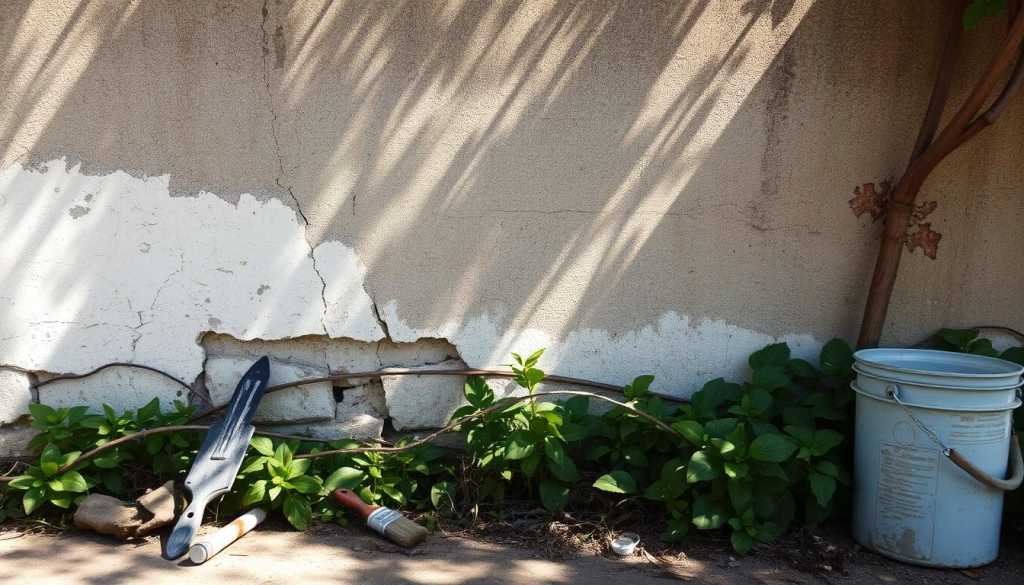
Budgeting for Your Wall Project
Building a wall needs careful budgeting for success. Whether it’s a wooden fence, brick wall, or concrete barrier, knowing the costs is key. This helps set a realistic budget and avoids financial surprises.
Setting a Realistic Budget
Start by setting a budget that fits your finances and project needs. Think about material, labor, permits, and extra costs like landscaping. A detailed budget helps manage your money well.
Contingency Funds: Why They Matter
Unexpected problems can happen during construction. That’s why a contingency fund is vital. Set aside 10-20% of your budget for it. This fund covers surprises like price changes or delays.
Tips for Staying on Budget
- Research local material and labor costs to set a budget baseline.
- Get quotes from different contractors to find the best deal.
- Focus on essential features and make compromises if needed.
- Seek advice from a financial advisor or construction expert.
- Update your budget as the project goes on to handle new expenses.
Follow these tips and plan your budget well. This way, your wall project will stay on track and within budget. You’ll achieve your vision without harming your finances.
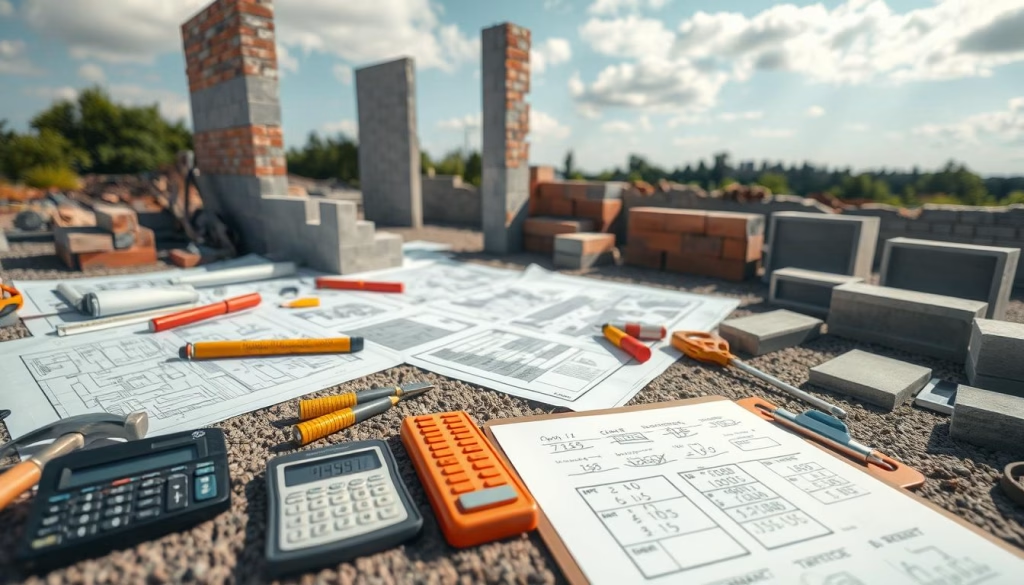
Planning and Design
Building a wall is more than just physical work. It starts with careful planning and design. Understanding this stage is key to a successful and affordable project.
Importance of Proper Design Plans
Having a detailed design plan is crucial before starting. It outlines the wall’s size, materials, and strength. Professional design services can avoid costly errors and improve your cost of building a wall.
Costs Related to Architectural Services
Getting an architect or designer adds costs, but it’s worth it. Fees range from 5% to 15% of the wall construction costs. This depends on the project’s complexity and customization needs.
Choosing the Right Design for Your Needs
- Think about the look you want, like modern, rustic, or traditional.
- Consider the wall’s purpose, like privacy, security, or decoration.
- Look into designs that use sustainable materials or save energy.
- Talk to design experts to find the best fit for your needs and budget.
Spending time and money on planning and design sets up your wall project for success and savings.
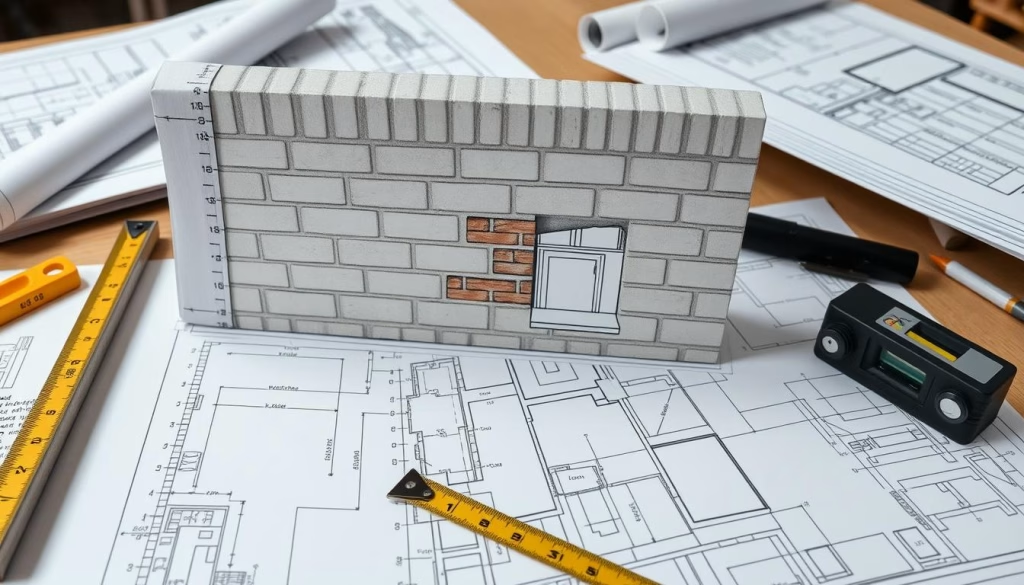
Comparing Wall Construction Quotes
Getting multiple quotes for your wall project is key to saving money. It’s not just about the price. You also need to think about other important factors when choosing a contractor.
How to Obtain Multiple Quotes
First, find reputable local contractors for your wall or fence project. Give them all the details about your project. This includes the length, height, and material you want.
Ask for a detailed quote. It should list the costs for labor, materials, and any extra expenses.
Evaluating Factors Beyond Price
- Quality of materials: Make sure the contractor uses strong, lasting materials.
- Warranty and guarantees: Look for contractors who offer good warranties and guarantees.
- Timeline and scheduling: Check if the contractor can finish on time and if they fit your schedule.
- Reputation and references: Read reviews and ask for references to see if the contractor is reliable and satisfied customers.
Negotiating with Contractors
After getting quotes, talk to the contractors about price. Tell them you’re comparing offers. See if they can lower their price or make changes.
The goal is to find the best deal without sacrificing quality.
| Contractor | Total Cost | Timeline | Warranty |
|---|---|---|---|
| ABC Fencing | $25,000 | 4 weeks | 10 years |
| XYZ Construction | $28,500 | 6 weeks | 5 years |
| Secure Borders Inc. | $23,800 | 3 weeks | 15 years |
By comparing quotes and negotiating, you can save money. This way, you can protect your borders without breaking the bank.
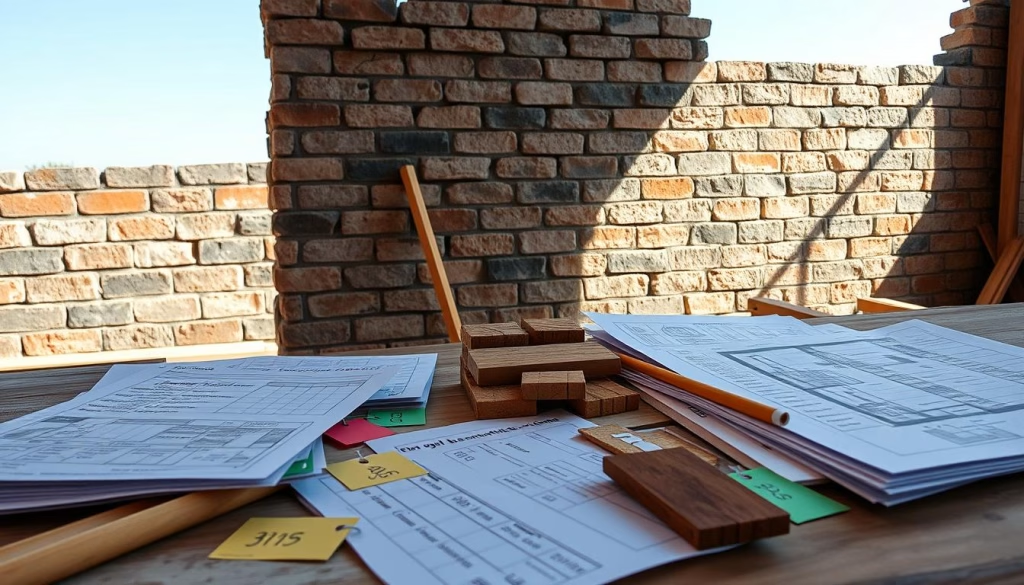
Seasonal Impacts on Construction Costs
Building walls can be affected by the time of year, whether using taxpayer funds or government funding. Knowing how weather and seasons impact costs is key for smart planning and budgeting.
How Weather Affects Pricing
Extreme weather can change wall construction costs. In winter, extra insulation and heating might be needed, raising costs. Summer brings heat, water use, and shade needs, adding to expenses.
Best Times of Year for Construction
- Spring and fall are best for wall building. The weather is mild, and it’s drier, making work more efficient and cheaper.
- During these seasons, contractors are easier to find, and materials cost less because demand is lower.
- There’s also less chance of weather delays, helping keep projects on track and within budget.
Off-Peak Discounts and Opportunities
Smart homeowners and project managers can save by building during off-peak times. In winter, some contractors offer discounts to stay busy. Building in the summer can also lead to better prices from suppliers and service providers.
Knowing how seasons affect wall construction costs helps you make better choices. This way, you can stretch your budget, whether using taxpayer funds or government funding for fences.
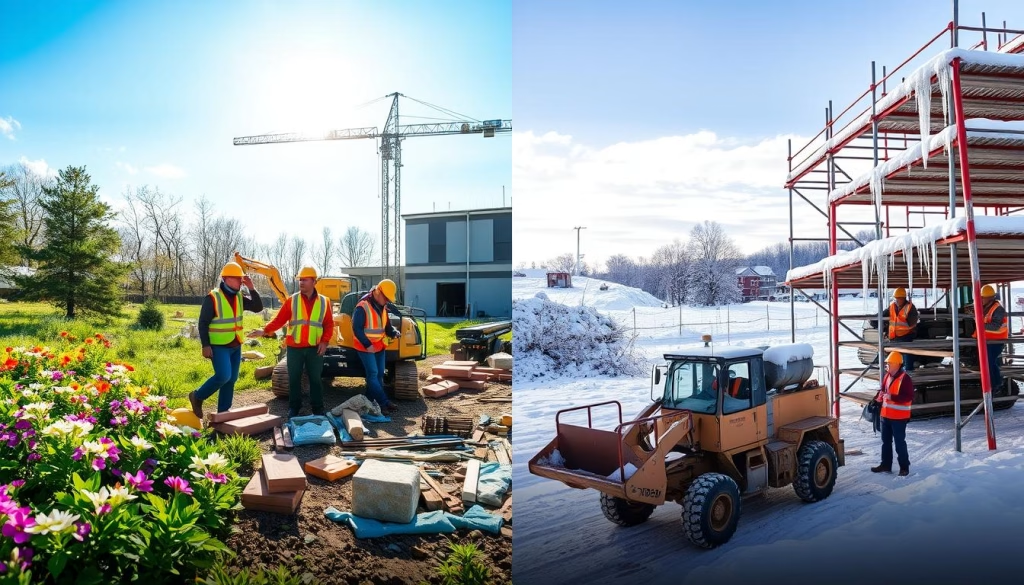
Long-Term Financial Considerations
Building a wall is more than just the upfront costs. It affects your property value, energy use, and insurance rates. Think about these long-term financial impacts when planning your wall project.
Increase in Property Value
A well-designed wall can boost your property’s value. Budgeting physical boundaries can make your home look better. This can lead to a higher resale value, making your investment worthwhile.
Energy Efficiency and Savings
A well-built wall can also save you money on energy. Estimating barrier projects with insulation or reflective materials can lower your heating and cooling bills. This can save you money over time.
Insurance Implications for Wall Construction
A sturdy wall might lower your homeowner’s insurance costs. Insurers might see it as extra protection, offering discounts. It can also help protect against trespassing and property damage, affecting your insurance needs.
Thinking about these long-term financial aspects can help you understand your wall’s true value. With careful planning and budgeting physical boundaries, your wall can be a smart investment for years.
Conclusion: Evaluating Your Wall Project Costs
Starting your wall construction project? It’s key to look at all the factors that affect costs. This includes the materials, labor, permits, and upkeep. Each one is important for the final cost.
Recap of Key Factors Influencing Costs
We’ve talked about how wall construction costs work. It’s all about the materials, where you are, and the skill of the workers. Knowing these helps you make a good budget for your project.
Final Tips for Cost Management
To keep costs down, get quotes from different contractors. Talk to them about prices and what they offer. Also, think about the future benefits like higher property value and saving on energy.
Encouragement to Start Planning
Now you know how to plan your wall project. Use what you’ve learned to plan your project. This way, you’ll have a smooth and affordable wall that adds value to your home.
FAQ
What are the average costs associated with building a wall?
Building a wall can cost a lot, depending on several things. The type of wall, materials, labor, and location all play a part. On average, it can cost between and per foot for a basic wall. But, more complex projects can cost more.
What are the main factors that impact the overall cost of a wall construction project?
Several things affect the cost of building a wall. The type of wall, materials, labor, and location are key. Also, permits, regulations, landscaping, and maintenance costs matter too.
How do the costs compare for different types of walls?
Costs vary a lot between wall types. Wooden fences are usually the cheapest. Brick and concrete walls are pricier. Vinyl fencing is a middle ground, offering good value and durability.
What are the most commonly used materials in wall construction and how do they affect the overall costs?
Common materials are wood, brick, concrete, and vinyl. Prices change based on availability, sustainability, and manufacturing. Choosing the right material is key to balancing quality, looks, and budget.
What are the typical costs associated with obtaining permits and adhering to local regulations for wall construction?
Getting permits and following local rules can add a lot to the cost. Permit fees can be hundreds or thousands of dollars, depending on the project. It’s crucial to include these costs in your budget.
How do labor costs impact the overall cost of building a wall?
Labor costs can be a big part of the budget, especially for skilled work. Professional installers charge between and 0 an hour, based on the job. Doing it yourself can save money but comes with its own challenges.
What are some of the additional expenses to consider when building a wall?
There are extra costs to think about. These include landscaping, maintenance, and how the wall might increase your property value or save on energy.
How can I effectively budget and manage the costs of my wall construction project?
To manage your budget, set a realistic goal and plan for extra expenses. Get quotes, talk to contractors, and watch for seasonal price changes. This helps keep your project on track.
What are the long-term financial considerations to keep in mind when building a wall?
Think about the long-term financial benefits of your wall. Consider how it might increase your property value, save on energy, and affect your insurance. These factors can greatly impact your investment.


